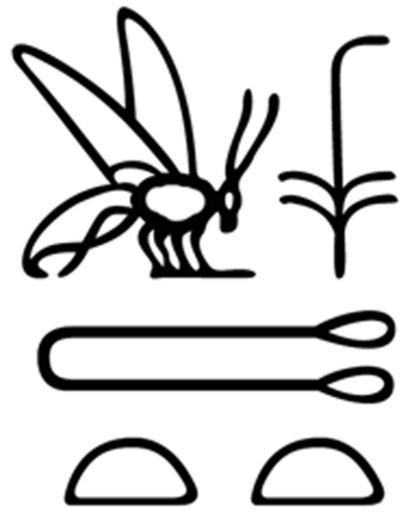MAKE A MEME
View Large Image

| View Original: | Egyptian_-_Scarab_with_Royal_Title_and_Name_of_Tjetet_(?)_-_Walters_4259_-_Impression_Detail.jpg (724x900) | |||
| Download: | Original | Medium | Small | Thumb |
| Courtesy of: | commons.wikimedia.org | More Like This | ||
| Keywords: Egyptian - Scarab with Royal Title and Name of Tjetet (?) - Walters 4259 - Impression Detail.jpg This steatite scarab is glazed and inscribed on the bottom with the two royal aspects title and Tjetet possibly a royal name The top has a medium high back and deeply incised details with almost regular line flow and good workmanship The piece is simply made The two royal aspects title does not contain a known royal name Either one can interpret the Tjetet as a miswriting or as an offering table which can lead to a reading of Belonging to the offering table of the King of Upper and Lower Egypt This interpretation is most likely yet one should not neglect the possibility that Tjetet is the name of an unknown king This scarab functioned as an amulet with kingship connotations and was originally mounted or threaded It is possible that the amulet should assure the participation in the royal rituals especially in the food supply and should also guarantee the supply for its private owner The undercutting of the legs the clear partition of the plates by deep incised lines and the single partition lines on the back are known for scarabs of the Third Intermediate Period between 746 525 BC late Third Intermediate-early Late Period light beige steatite with green-blue glaze cm 0 6 1 1 4 accession number 42 59 21999 Henry Walters Baltimore 1929 mode of acquisition unknown Walters Art Museum Henry Walters Acquired by Henry Walters 1929 Translation The term tt t following the state ruler title does not contain a known royal name King of Upper- and Lower Egypt Tjetet place of origin Egypt Walters Art Museum license 2D Ancient Egyptian scarabs in the Walters Art Museum Nesut-bity Hobble tj hieroglyph Egyptian - Scarab with Royal Title and Name of Tjetet (?) - Walters 4259 - Impression Detail.jpg This steatite scarab is glazed and inscribed on the bottom with the two royal aspects title and Tjetet possibly a royal name The top has a medium high back and deeply incised details with almost regular line flow and good workmanship The piece is simply made The two royal aspects title does not contain a known royal name Either one can interpret the Tjetet as a miswriting or as an offering table which can lead to a reading of Belonging to the offering table of the King of Upper and Lower Egypt This interpretation is most likely yet one should not neglect the possibility that Tjetet is the name of an unknown king This scarab functioned as an amulet with kingship connotations and was originally mounted or threaded It is possible that the amulet should assure the participation in the royal rituals especially in the food supply and should also guarantee the supply for its private owner The undercutting of the legs the clear partition of the plates by deep incised lines and the single partition lines on the back are known for scarabs of the Third Intermediate Period between 746 525 BC late Third Intermediate-early Late Period light beige steatite with green-blue glaze cm 0 6 1 1 4 accession number 42 59 21999 Henry Walters Baltimore 1929 mode of acquisition unknown Walters Art Museum Henry Walters Acquired by Henry Walters 1929 Translation The term tt t following the state ruler title does not contain a known royal name King of Upper- and Lower Egypt Tjetet place of origin Egypt Walters Art Museum license 2D Ancient Egyptian scarabs in the Walters Art Museum Nesut-bity Hobble tj hieroglyph | ||||